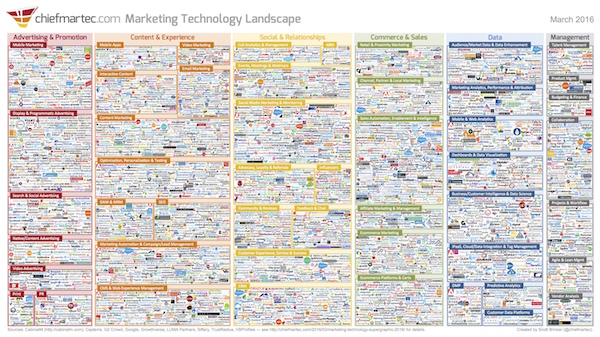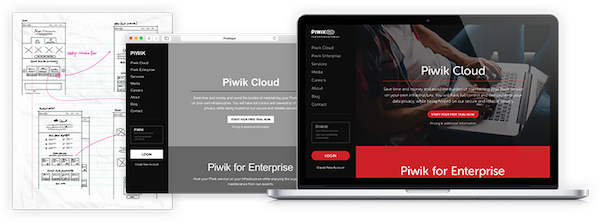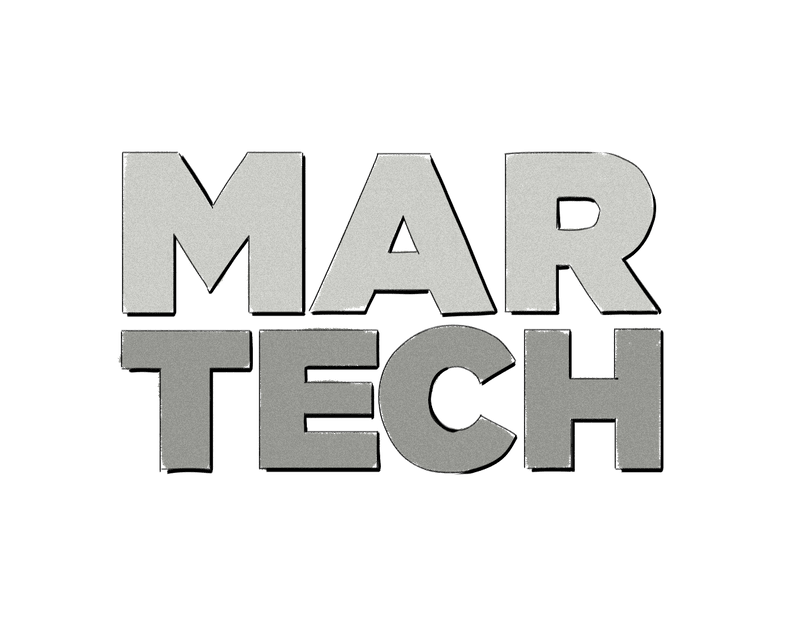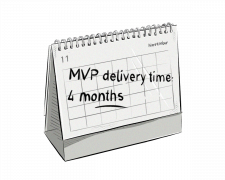There has been a huge influx of new MarTech solutions over the past few years; chiefmartec’s annual Marketing Technology Landscape Supergraphic illustrates this point very well.

Although the number of new MarTech vendors has been increasing year-on-year and adoption rates of marketing technologies remain in a constant uptrend (especially in the B2B space), there are some companies that still find the out-of-the-box solutions don’t provide them with all the tools or features they need to meet their specific business needs and goals.
It’s at this point that they shift their focus from choosing an existing MarTech vendor to building their own custom solution.
However, MarTech development comes with its own challenges and concerns, including fear that the project will fail or will take way too long to build, and not knowing whether it will solve the problems it’s addressing.
The good news is that many of these concerns can be addressed and even eliminated; it all comes down to implementing and following the right approach, and the approach that has worked very well for us when building MarTech platforms involves rapid prototyping, minimum viable product (MVP) development, and adopting the agile methodologies.
Rapid Prototyping
Rapid prototyping is a design process used to create an early working, interactive, and visual model of your MarTech solution. It consists of many traditional design products (e.g. wireframes), but also some new features that take it from being just a design to an interactive model.
A rapid prototype consists of the following:
- Screen flows
- Wireframes
- Low-fidelity prototype
- High-fidelity prototype (including interactive components, e.g. buttons and navigational features)

The Benefits Of Rapid Prototyping
Bring your ideas to life. While screen flows and wireframes allow you to seeyour MarTech platform, an interactive rapid prototype allows you to experience it, which not only enables you to clearly present your product’s goals, but allows you to discover and fix usability flaws early on.
Showcase your product to key stakeholders. By creating an interactive model of your MarTech solution, you are able to demonstrate your ideas, goals, and vision to all stakeholders — whether that be your in-house marketing team, your investors, or even your clients — and gain early feedback from them, allowing you to make immediate improvements.
Set the foundation for development. In software development, there are a number of key crossover moments where things can go wrong, mainly when the project moves from the design team to the development team. However, a lot of the risk can be mitigated if you have a rapid prototype, as this will provide a clear and visual guide for the development team.
Minimum Viable Product (MVP)
A minimum viable product (MVP) is the first working version of your MarTech solution. An MVP contains the bare minimum set of essential features and functions required to be deployed and released to a group of early adopters — customers or team members who will use your MarTech platform and provide honest and valuable feedback.
Starting with an MVP, compared to undertaking a large-scale software development project, will answer a number of very important questions and provide a rich learning experience, allowing you to discover more about your true customers, the market you are about to enter, and potential obstacles.
The initial outcomes of the MVP will pave the way for future development and confirm the subsequent steps to take with the project – whether that be to pivot and change direction, or continue ahead.
The process of developing an MVP is made up of six main stages, which are applied to each new feature or improvement during the MVP development stage:

Agile Development
Once the MVP has been built and released, which can take anywhere from 3-4 months depending on the complexities of the project, the next step involves evaluating the feedback from the initial users (either customers or co-workers) and building new features.
It’s at this stage that the agile methodologies and incremental development come into play, although rapid prototyping and MVP development are also examples of agile and incremental development.
Agile development is a somewhat vast topic and each team will have its own way of applying the agile methodologies to a project, but there’s one main key that should be followed: incremental releases by working in two-week sprints.
The advantages of working in two-week sprints are plentiful:
- New or improved features are released sooner, allowing users to provide feedback.
- Problems and obstacles can be averted quicker.
- It encourages better agile practices — e.g. reducing work-in-progress, reduces waste, and produces better throughput.
- Bugs and other flaws are picked up and fixed continuously as testing is done on each new piece of code.
- The team and stakeholders meet on a regular basis, which provides opportunities to provide feedback, raise concerns, and ask questions.
And there you have it! That’s our hack for designing, building, and releasing MarTech solutions.
This post originally appear on chiefmartec.com as part of the Hackies competition.







